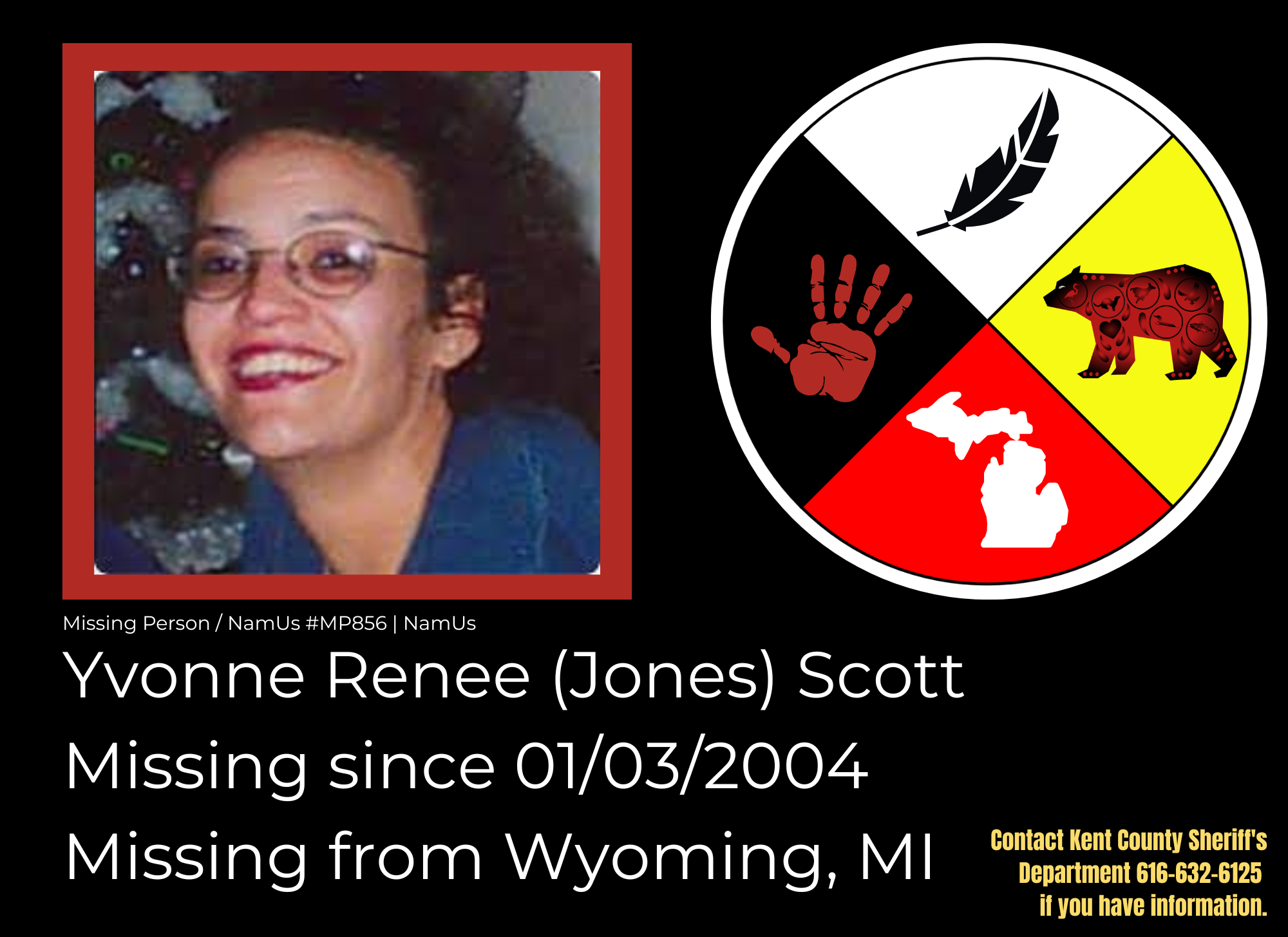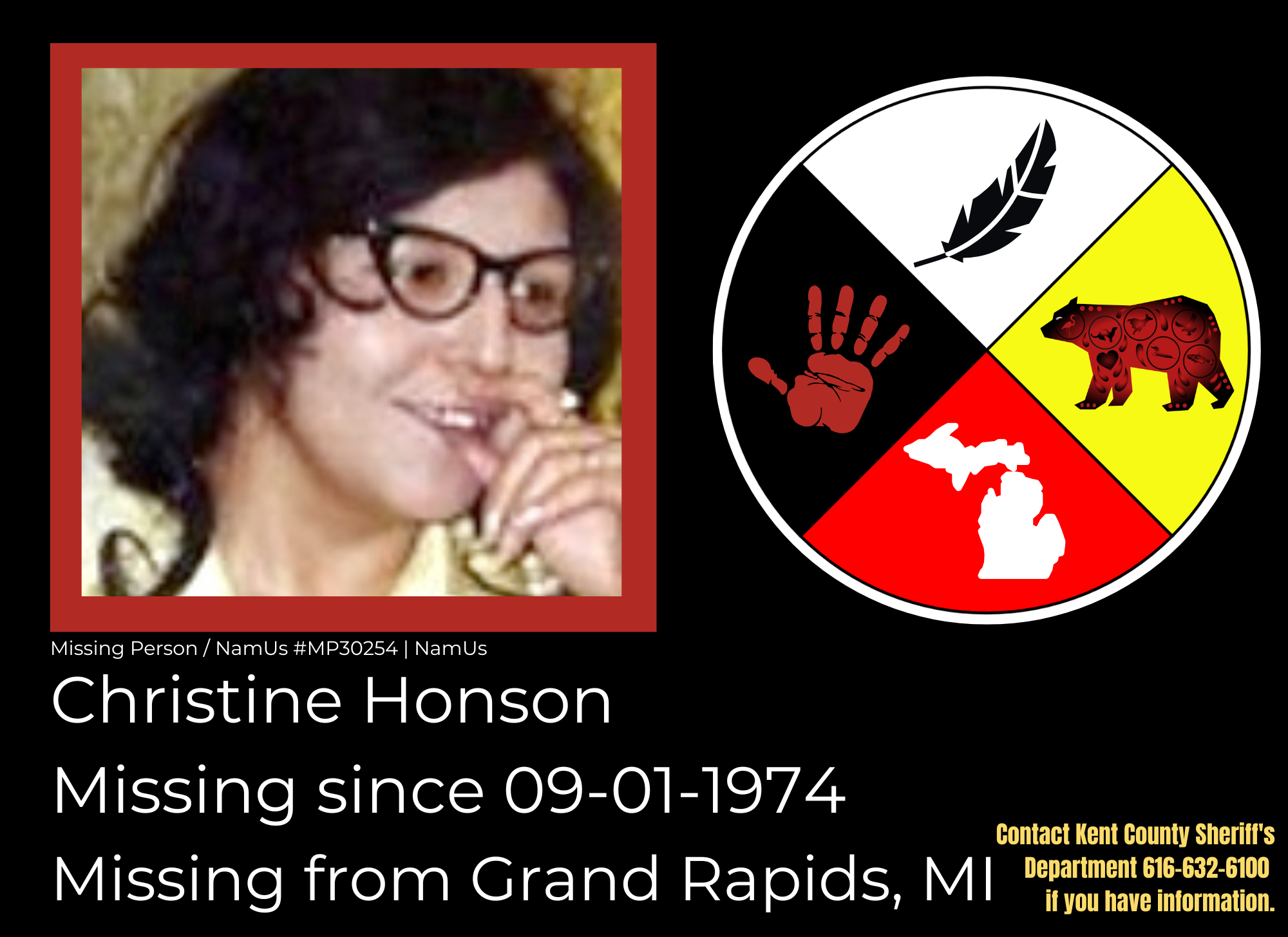May is Missing and Murdered Indigenous Relatives Awareness Month

May: Honoring the Red Dress
Each year, on May 5, we honor and remember our Missing and Murdered Indigenous Women and Relatives (MMIWR). For many, the red dresses, the marches, the prayers, vigils, and stories bring a painful but necessary light to the ongoing crisis facing our Native relatives. However, for our families and communities, this is just for May 5, but every day of the year.
Over the past few years, we have seen some progress. On the federal level, we have passed Savanna’s Act and Operation Lady Justice, which were created to bring attention to our MMIWR and to improve communication and coordination between tribal, federal, and state agencies. However, legislation alone cannot heal the wounds or stop the violence. We need your help.
Tribes still face jurisdictional barriers that limit their ability to investigate or prosecute certain crimes committed on their land, especially when a Non-Native perpetrator is involved. Fortunately, on September 27th, 2022, the Sault Ste. Marie Tribe of Chippewa Indians Board of Directors passed a resolution authorizing criminal code revisions necessary to expand tribal jurisdiction over non-Natives committing crimes against Native citizens involving child violence, sexual violence, sex trafficking, stalking, and assault against justice personnel that occur on tribal land.
Among other issues is a lack of funding for our tribal justice systems. They lack the resources to pursue the thousands of missing and murdered cases. Lastly, the lack of proper data and reporting is an issue that remains unresolved. Many of our relatives are still misclassified, overlooked, and go unreported.
“A big reason the media ignore Indigenous issues is due to the repeated dehumanization and stereotyping of Native people. Indigenous people, throughout all American history, have been turned into spectacles, becoming mascots for sports games, costumes for Halloween, and the subjects of many tattoo designs. Our medicines, such as white sage, and our sacred items, such as dreamcatchers, have been appropriated by those who don’t understand how important they are to us. Modern views of Indigenous people have caused movements like MMIW to be seen as “Indian issues” that aren’t worth the time to explore. These attitudes fuel the urge of the country at large to turn a blind eye, as it’s not affecting people they deem worthy of help.” (www.stopthehurt.org/mmiw-an-important-issue-no-one-is-talking-about)
The Advocacy Resource Center believes that our community and culture are our medicine. While we continue to advocate for change at the federal level, we also feel significant changes can occur here, in our hometowns and communities.
We must look out for one another. We must support our survivors of intimate partner violence and assist them with their needs in hopes of preventing revictimization. We need to educate our youth about their worth and the value of others. We need to model healthy relationship behaviors for our youth. We must empower young girls to speak up and not tolerate unhealthy relationship behaviors. We must reclaim our culture and traditions because Native Americans are not naturally violent people. We are kind, loving, and good to women, children, and Two-Spirit individuals. Violence is NOT our tradition.
You don’t have to work in advocacy to make a difference. You can help your community by sharing the stories of missing and murdered individuals in your area. Speak their names and keep their spirits alive. Continue to remember them and let everyone know that their lives mattered. You can support families of missing and murdered relatives by donating to a memorial fund, lending a listening ear, and attending events in honor of our MMIR.
The Advocacy Resource Center hosts an MMIR event each year to promote awareness for our stolen relatives. Over the past two years, ARC has made efforts to bring awareness to more Sault Tribe communities. In 2024, ARC hosted an MMIR event in St. Ignace, MI, with a powerful march down State Street. This year, we hosted our March in Manistique, MI. ARC encourages all communities to host an MMIR event regardless of ARC’s presence. It does not take much to gather others together in a space, wear red, and stand for what you believe in. You can make signs, say prayers, and speak the names of your lost loved ones to show your support. It would be incredible to have every community unite in solidarity to honor our stolen relatives on May 5.
What else can you do to show your support? You can display a red dress in your yard. You can hang one or several; it is a powerful message and a great way to show your support. Seeing the visual representation of a life lost or stolen can make a vast difference. You can educate yourself on the warning signs of human trafficking and domestic and sexual violence. You can support survivors by donating to a local shelter and assisting with transportation, food, clothing, or whatever needs are lacking. Most importantly, we need to protect one another. We must watch out for one another, protect our neighbors, and ensure our people arrive home safely.
Ask that your loved ones call, text, or share their location with you so that you know they arrived safely. If you witness a violent situation, making a phone call to the police or authorities can save a life. You can call anonymously. Once more, educate our youth. Talk to teens about dating violence. Let teens know what behaviors are unhealthy and let them know that help is available.
The Advocacy Resource Center currently maintains a database for Missing and Murdered Indigenous Sault Tribe members. To date, the Sault Ste. Marie Tribe of Chippewa Indians has 35 reported Missing and Murdered Relatives. Of those 35, 22 are reported as murdered, and 13 have been reported missing. Currently, 10 of the reported 22 murders were victims of intimate partner violence. Of the 13 once reported missing, 4 of those Sault Tribe members are currently still missing.
The families of the current missing Sault Tribe members have requested that ARC continue to share their loved ones' stories and information to seek tips or new information about their family member’s disappearance. If you have any information about the following people, please call the phone numbers provided.

Yvonne Renee (Jones) Scott (then 31 years old) disappeared from Wyoming, MI on January 3, 2004. Yvonne was last seen at approximately 11:00 p.m. in the 2900 block of Clyde Park Avenue southwest in Wyoming, Michigan. That day, she had called the police to report that two people had robbed her. Officers went to the scene and took an incident report. Yvonne left afterwards and began walking eastbound on 28th Street. She has never been heard from again. Authorities identified a suspect after Yvonne’s disappearance and searched his vehicle and home, but turned up no evidence. No one has been charged in connection with her case. Investigators believe her disappearance may be connected to a series of murders in the local area, all of the victims were prostitutes. Yvonne would be 52 years old today. Yvonne’s immediate family has since passed away. They tried desperately to find their daughter/sister until their passing. Yvonne also had a husband and two young sons who wished to know where their wife and mother went. ARC’s Community Educator, Jess Gillotte-King, a relative of Yvonne Scott, continues to advocate for Yvonne and actively shares her story. Yvonne’s parents were Sharon and Norm Jones of Grand Rapids, MI. If you have any information about Yvonne, please get in touch with the Kent County Sheriff’s Department at 616-632-6125. Visit www.charleyproject.org/case/yvonne-renee-scott for more information.

Christine Marie Honson, a Sault Tribe member, was last seen in Grand Rapids, MI, in September 1974. At the time of her disappearance, she was 32 years old. She had lived in Petoskey, Michigan, with her husband and three children. Her marriage was troubled. She occasionally left home for a few days at a time but always reappeared.In September 1974, Christine disappeared from her home in Petoskey. Her husband found some suitcases in their backyard and assumed she had left him and possibly hitched a ride out of the area. A week later, Christine’s husband drove to the home of one of her relatives in Grand Rapids and left the suitcases there. Once he returned to Petoskey, he filed a missing persons report. Christine’s sisters in Grand Rapids reported seeing her in the summer of 1974. She had a close relationship with her sisters, and their families frequently visited each other. In the fall of that year, Christine called her sister and her sister-in-law, saying she would visit them. Christine did not visit, however, and her family never heard from her again. There has been no activity on Christine Honson’s Social Security number since the summer of 1974, and she never renewed her driver’s license. She had a good relationship with her children, and her loved ones would not think she would have abandoned them. Christine Honson may have used the following aliases: Barbara Jean Compo, Christine Marie Compo, and/or Christine Marie Harrington. Christine would be 82 years old today. If you have any information about Christine Honson, please contact the Kent County Sheriff’s Department at 616-632-6100. Visit www.charleyproject.org/case/christine-marie-honson for more information.

Stephen J. Houghton, a Sault Tribe member, was reported missing by his mother on August 18, 2023. Stephen was last seen on February 20, 2022, by New York State Police at Glens Falls National Park in Moirah, NY. Stephen Houghton’s vehicle was abandoned on Johnson Pond Road in North Hudson, NY. Stephen is 6’2” and weighs 225 lbs. He would be 36 years old today. He has black hair and blue eyes. If you have any information about Stephen, please get in touch with the New York State Police at 518-314-7516. Visit www.NamUs.nij.ojp.gov/missing-person-namus-mp140356 for more information.

Joanne Lynn (Somes) Vogt, a missing Sault Tribe member, was last seen in Boise, Idaho, in 1990. Joanne and her husband were known to have been tenting in the area. Joanne made a brief phone call to her young daughter on June 22, 1990, and has not been heard from since. Joanne is a brunette, though she colors her hair blonde. She is 5’3” and weighs 115 lbs. Joanne had a lazy left eye and pierced ears. Joanne had resided in Nevada and may have gone to California with her then-husband, Ron Vogt. Joanne has two children, Larry and Pamela. Joanne was married three times. Joanne may go by Joanne Forster, Joanne Bryer, Jo Somes, or Joanne Vogt. Joanne would be 75 years old today. Her family misses her dearly and would like any information about their loved one, should anyone have any. Please contact the Advocacy Resource Center at 906-632-1808 if you have any information about Joanne Vogt. ARC will contact the proper authorities with Joanne’s information.
If you would like to report a missing or murdered Sault Tribe member, please contact the Advocacy Resource Center’s Community Educator, Jess Gillotte-King, with the following information:
If MURDERED:
First/Middle/Last Name
Date of Birth
Date of Death
Murdered/When/Where
Perpetrator name, if known
If MISSING:
First/Middle/Last Name
Nickname/Alias
Date Last Seen/Went Missing
Place Last Seen
Physical Description
Distinctive Physical Features
Vehicle Information
*Information provided does not have to be current.
The Advocacy Resource Center is seeking information for ALL missing or murdered tribal members, including the seven-county service areas and tribal members across the world. If you need support or advocacy, please contact the ARC at 906-632-1808. You can also visit www.arcsaulttribe.com for more information.
